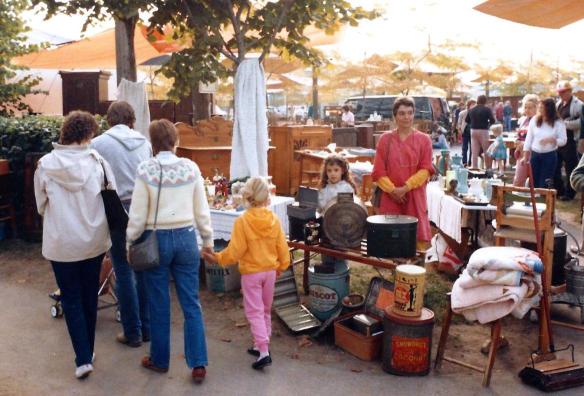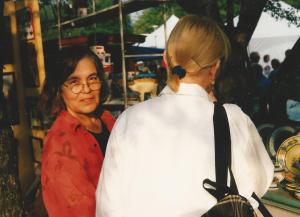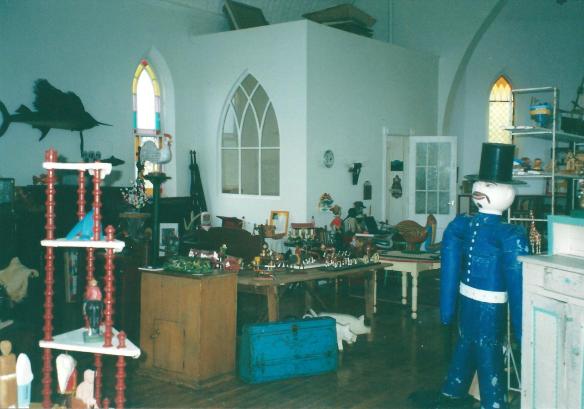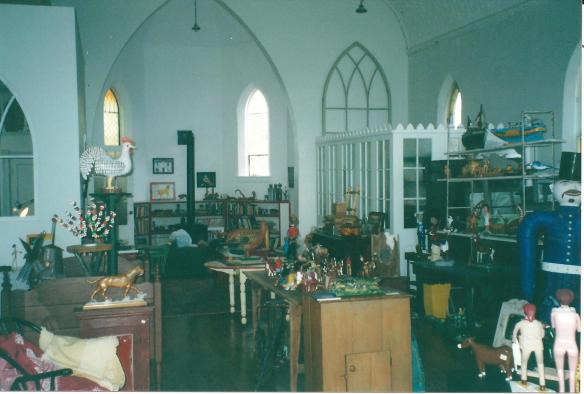 “Canada’s favourite antique & vintage show with hundreds of dealers and almost 10 acres of treasures to be discovered. You’ll find china, jewellery, signs, tins, scientific instruments, folk art, postcards, native artifacts, Canadiana, fine art, nostalgia items, furniture and much, MUCH more! Food vendors onsite. Rain or shine. – you’re sure to find something to love!”
“Canada’s favourite antique & vintage show with hundreds of dealers and almost 10 acres of treasures to be discovered. You’ll find china, jewellery, signs, tins, scientific instruments, folk art, postcards, native artifacts, Canadiana, fine art, nostalgia items, furniture and much, MUCH more! Food vendors onsite. Rain or shine. – you’re sure to find something to love!”
This is the way the Ontario Summer Fun Guide describes the Christie show and I think it’s accurate up to a point. You will find all the things listed above on the field. What they don’t include in the list and I feel should be, is reproductions: and it should be way up the list. Perhaps number one. The field is rife with them. And as you stand there and watch the crowd you realize how few people notice, or perhaps care for that matter, if they are buying a reproduction or not.
I saw a man ask the vendor as he lifted one of ten identical cast iron string holders, “so this is old, right. It looks old.” There’s ten of them sir. He bought it. I rest my case. I’m afraid that sounds elitist but I think it is a fair observation.
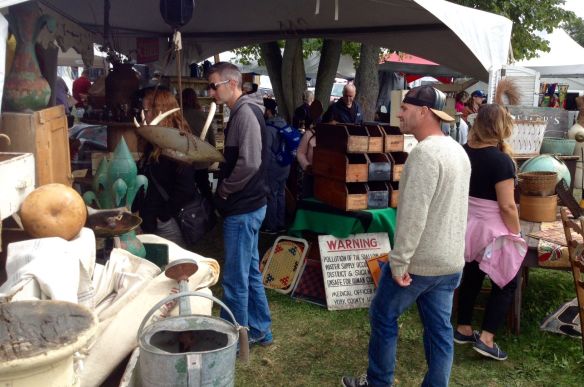 This is sort of tragic in the way that a lot of what is happening to our society over the last while is tragic. Fake is as good as real, as long as it makes you feel good about yourself. If it’s cheap and it looks like an expensive thing, who cares? Well I care, and I think a lot of people care.
This is sort of tragic in the way that a lot of what is happening to our society over the last while is tragic. Fake is as good as real, as long as it makes you feel good about yourself. If it’s cheap and it looks like an expensive thing, who cares? Well I care, and I think a lot of people care.
In the interest of education, and fairness for goodness sake, I think that show management should insist that every reproduction is a clearly indicated on the tag as “Reproduction”. That’s all. In fact a separate, uniform tag with “Reproduction” in big red letters would be best. I think it would make a world of difference, and there’s no down side. Those who don’t care will not begin to do so, those who know it is a repro will no longer be offended, and most importantly those who are in doubt will no longer feel as vulnerable, and will trust the system well enough to go ahead and purchase that item he or she “thinks” is an antique. If we have to accept that reproductions are a big part of our antique and vintage markets today, and I guess we do, then at the very least, label them as such. I would think that it is easy to make a strong case to the dealers that this is in their interest, and I doubt that it would even result in less sales. There’s still always going to be lots of people happy to buy a reproduction if it does the job for them.
The problem with continuing on the current course is that it eventually cheapens everything, and dumbs us all down to the point that it all becomes meaningless. On the field you can already feel that for many it is more of a shopping “experience” than it is an actual attempt to acquire an antique or vintage item. I didn’t see that many people actually carrying anything.
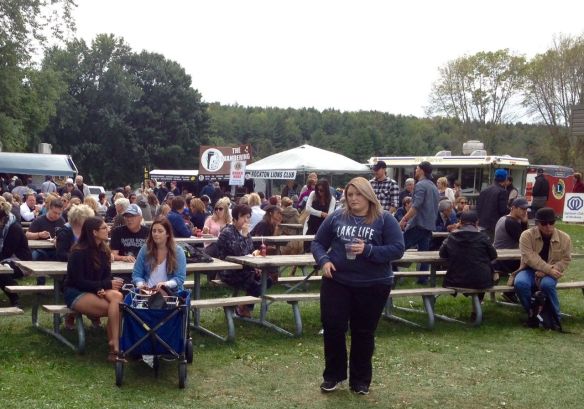 Still, several dealers did tell me that they did o.k. I guess they’ve still got their regulars, and if you sell one or two strong items that can make your day. Also, I have to add that overall, people seemed to be having a good time, and there’s nothing wrong with that is there. It’s a lovely way to spend the day looking at things, eating some junk food (or better. They offer that now), chatting with friends, etc. But to get back to business, bottom line, if not enough enterprise is exchanged, the vendors will give up on it. As will the people.
Still, several dealers did tell me that they did o.k. I guess they’ve still got their regulars, and if you sell one or two strong items that can make your day. Also, I have to add that overall, people seemed to be having a good time, and there’s nothing wrong with that is there. It’s a lovely way to spend the day looking at things, eating some junk food (or better. They offer that now), chatting with friends, etc. But to get back to business, bottom line, if not enough enterprise is exchanged, the vendors will give up on it. As will the people.
If you go back ten years the Christie show was run by Jeff and Wendy Gadsden and there was no reproduction allowed. They policed it and would ask you to take down any reproduction they found. In those days the audience demanded this and would complain to the management if they found out they had bought a re-pop. Jeff would go with the offended purchaser and the dealer was confronted. It could get ugly. That seems a life- time ago and a world apart. Where has everyone gone who cared about quality and integrity? Wow, now I’m really sounding like a grumpy old man. But really. What happened? Did the I-phones and I-pads and the whole inter-whoop business melt all of our brains so quickly and completely. I can see I’m on a roll, so I will stop.
I notice that of my principal interests, folk art is number six on the list, and Canadiana comes in at number nine. That feels about right in terms of crowd interest. But it’s hard for those of us who know that for about twenty of the shows thirty years life span, Canadiana was definitely number one. They wouldn’t even let in folk art for the longest time.
Ah well. Not to despair. Change comes, and we never know what form it will take, or when. In the meantime, let’s do our best to keep our interests alive, and support the like-minded people involved as best we can. And let’s agree to label reproductions as reproductions. Some dealers would do it voluntarily if they weren’t afraid of losing their shirts. It’s really up to the show promoters to come up to the plate. I think it would really help this show, and furthermore labeling reproductions as such should be encouraged right across the industry. 

